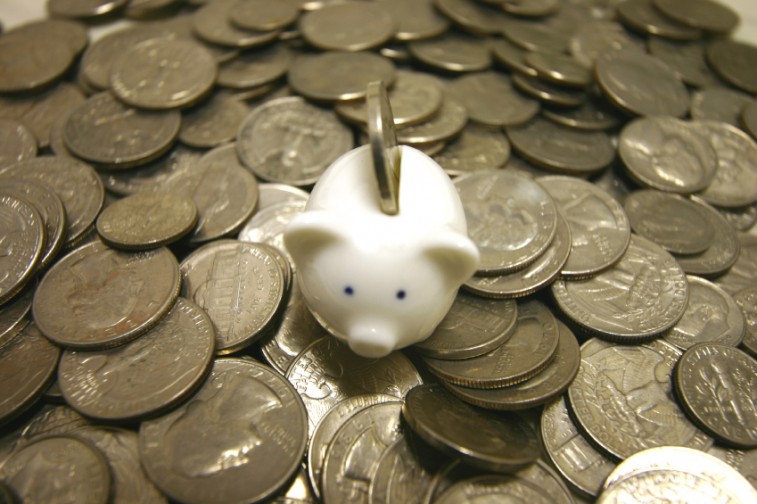5 Easy Ways to Build an Emergency Savings Fund

Be patient. Your savings account will grow over time. | iStock.com
Life rarely goes as planned, so it’s important to prepare for those moments when you need additional financial cushion. Establishing an emergency savings fund is essential to your financial health. An unexpected illness, job loss, or home repair could cause significant financial distress if you’re unprepared.
Saving money on a regular basis requires a great deal of discipline. However, the key is to rethink the way you approach building your rainy day fund. Instead of thinking of all the things you’ll be giving up, think of the fact that you’ll be preparing yourself for the unexpected. Having peace of mind is worth the temporary discomfort you might experience when you start tightening your budget.
Let’s take a look at five ways to build an emergency savings fund.
1. Set small savings goals

Start small when it comes to savings. | iStock.com
Financial planners generally recommend saving between 10% and 15% of your income and having roughly three to six months of expenses in reserve. (Others recommend six to 12 months.) However, if you are not able to save that amount each pay period, get into the habit of socking away whatever you can. Even if you can only save $10 or $20 each week, set it aside. This way, once your financial situation improves, you’ll already be in the savings habit.
In the meantime, practice frugal habits, and watch your money grow. J.D. Roth, founder of Get Rich Slowly, advises against setting unrealistic savings goals, so you don’t get discouraged. Roth says it’s important to remember it’s the small steps that will help you build wealth.
“Part of the problem is that we live in a society that idolizes the Big Winner,” he says in a blog post. “Nobody celebrates the guy next door who bikes to work, grows his own food and cooks his own meals, shops at the thrift store, and gets all his books from the library. That sort of life isn’t glitzy. Yet it’s that sort of life that can (and does) lead to true wealth.”
2. Set up automatic savings

Saving is easier when it’s automatic. | iStock.com
If you have trouble getting into the savings habit, have a portion of your paycheck automatically transferred to your savings account as soon as you get paid. If impulse spending is a concern, consider establishing an online savings account that is not directly connected to your checking, so it will take a bit more effort to withdraw funds. This might help reduce the urge to withdraw money for unnecessary purchases.
“Over time, these automatic deposits add up,” according to America Saves. “Fifty dollars a month accumulates to $600 a year and $3,000 after five years, plus interest that has compounded. Soon you will be able to cover many unexpected expenses without putting them on your credit card or taking out a high-cost loan.”
3. Start a savings club

A group can help support you in your savings quest. | iStock.com
There is power in numbers. When a group gets together to work toward a common goal, almost anything can be accomplished. Gather a group of friends who are also attempting to pump up their nest egg. Meet at least once a month to review savings goals, and cheer each other on when someone meets a target. One way to keep track of savings as a group is to use a savings app. One app to try is Qapital, which allows a group to create and track shared goals.
4. Cut back on extras

Cut back on extras by looking for deals and going the DIY route. | iStock.com/Tinatin1
Another quick and easy way to build emergency savings is to cut back on the frequency of certain purchases or cut out unnecessary expenses. For example, if you usually get a manicure or hair salon services every week, cut back to every other week (or do your grooming at home). You can stash the cash you’ve saved into your emergency fund.
Also, re-evaluate your grocery shopping habits. If you tend to buy all name-brand items, switch to generic. You can save an average of 25% on your grocery bill, according to Consumer Reports. And if you’re worried about sacrificing taste to save a few bucks, you have nothing to fear. Consumer Reports testers found most of the time generic items taste just as good as their name-brand counterparts.
5. Sell old items

Make some extra cash by holding a garage sale. | iStock.com
Do you have tons of unused items cluttering your home? Why not sell them for some quick cash? If you look hard enough, you’ll find there’s money lying around your house, just waiting to pad your savings account. You can resell anything, including old books, toys your kids don’t play with anymore, clothing, and electronics. Start by making a list of items you have in your home that could be sold. Then, search online for reasonable resale prices. Websites, such as Garage Sale Tracker and Angie’s List, are good places to start if you need a basic pricing guide. If a traditional yard sale isn’t your thing, you can go the online route, and sell items through Amazon, eBay, VarageSale, Craigslist, and even Facebook.
No comments:
Post a Comment